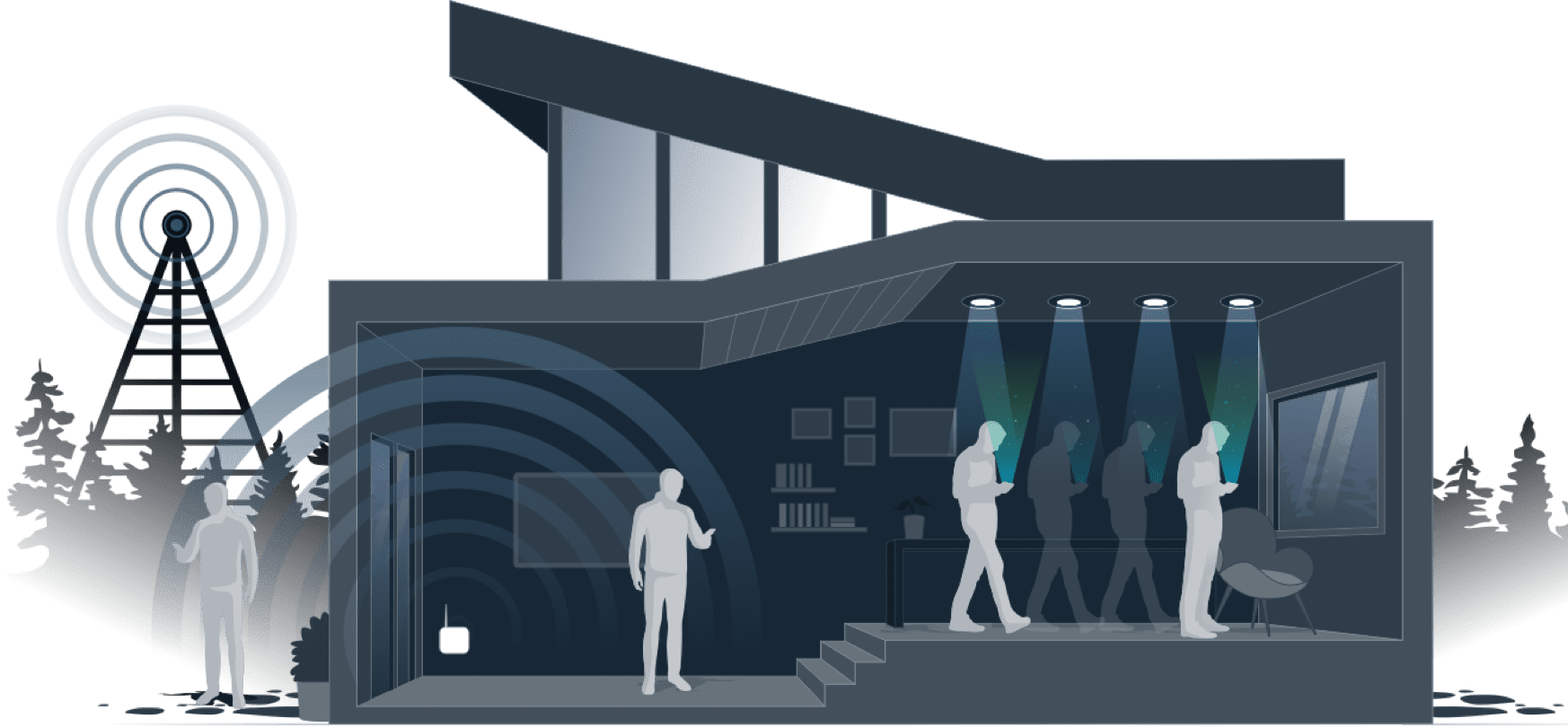Li-Fi Technology:Data Networking at your footstep
Li-Fi
is a technology for wireless communication between devices using light to
transmit the data. The term was first introduced by Harald Haas during a
2011 TEDGlobal talk in Edinburgh.

WHAT IS THE DIFFERENCE BETWEEN
Wi-Fi & Li-Fi ?
Li-Fi
is a visible light communication system that is capable of transmitting data at
very high speeds over the visible light spectrum, UV and IR radiation.
Wi-Fi
is a wireless local area networking that uses Radio frequency for the
transmission of data.
WHY Li-Fi?
Connectivity is evolving. The spectrum now has to
accommodate more mobile users. Connected devices are forecasted increase
to 20 Billion IoT devices by the year
2020. It is time to future proof our networks to enable the connectivity
demands of tomorrow. With LiFi we can utilise spectrum more than 1000 times
greater than the spectrum utilised for radio frequencies. LiFi is now unlocking
unprecedented data and bandwidth.
HOW DOES Li-Fi WORK?

LiFi allows for data to be transmitted by
modulating the intensity of light, which is then received by a photo-sensitive
detector. The light signal is then demodulated into electronic form. This
modulation is performed in such a way that it is not perceptible to the human
eye. The way LiFi works is simple but powerful. When a
constant current is applied to an LED light bulb, a constant stream of photons
are emitted from the bulb which is seen as illumination. LED bulbs are
semiconductor devices, which means the current, and therefore
the illumination can be modulated at extremely high speeds which can be
detected by the photo-detector. Using this technique allows for high-speed
information can be transmitted from an LED light bulb.
ADVANTAGES OF Li-Fi OVER Wi-Fi?

Radio frequency communication requires radio
circuits, antennas and complex receivers, whereas LiFi is much simpler and uses
direct modulation methods similar to those used in low-cost infrared
communications devices such as remote control units. LED light bulbs have high
intensities and therefore can achieve very large data rates.
The
inherent security advantages of using light for wireless communications allows companies
to enhance the security for the wireless networks significantly. The ability to
strictly define the access points allows precise partitioning of the office environment.
Moreover, Light can be contained. Light cannot travel through walls,
which means a LiFi signal can be secured in a physical space. pureLiFi’s
technology also enables additional control as data can be directed from one
device to another. Users can see where data is going.
HOSPITALS
AND HEALTHCARE
Li-Fi
offers unprecedented opportunity with hospitals and healthcare facilities.
Li-Fi does not emit any kind of electromagnetic radiations and hence doesn’t interfere
with those emitted by the MRI scanners or any other medical instruments.
SUSTAINABLE
DEVELOPMENT & SMART CITIES
Li-Fi
enable the realization of smart cities. Street lights, building lights, and
transportation lighting can all communicate wirelessly and this serves u all a
dual purpose. Li-Fi can relieve public wireless congestion as an offloading facility
for all radio frequencies.
DATA
DENSITY AND INTERFERENCE NETWORKING
Data density offers a greater user experience as it
reduces the need to share the wireless bandwidth with other users. LiFi can
achieve approximately 1000 times the data density of Wi-Fi offering more data
per square metre. This is an important factor for wireless efficiency.
Radio frequency technology such as Wi-Fi
is vulnerable to interference from a wide range of devices such as cordless
phones, microwaves and surrounding Wi-Fi networks. LiFi signals can be defined
by the area of illumination, which means interference is much simpler to avoid
and even stop altogether. This also means LiFi can be used in RF hostile zones
such as hospitals, power plants and aircrafts.
EFFICIENCY
LiFi allows the re-purposing of light for
communications as it uses the same infrastructure. LED lights are already
widely efficient, and LiFi gives them
another purpose, connectivity.
DISADAVNTAGES
1) Internet cannot be
used without a light source. This could limit the locations and situations
in which Li-Fi could be used.
2)Because it uses
visible light, and light cannot penetrate walls, the signal's range is
limited by physical barriers.
3)Other sources of light
may interfere with the signal. One of the biggest potential drawbacks is
the interception of signals outdoors. Sunlight will interfere the signals,
resulting in interrupted Internet.
4)A whole new infrastructure
for Li-Fi would need to be constructed


REFERENCES:
ReplyDelete1)https://en.wikipedia.org/wiki/Li-Fi
2)https://purelifi.com/technology/
3)https://www.techworld.com/data/what-is-li-fi-everything-you-need-know-3632764/
4)https://www.webopedia.com/TERM/W/Wi_Fi.html
Useful information...👍
ReplyDeleteThanks a lot Koushal....
DeleteGood work may be the light source linked wth some other source which can penitrate can be used think in that way
ReplyDeleteany way nice piece of information
all the best.
Thank you so much...
Delete